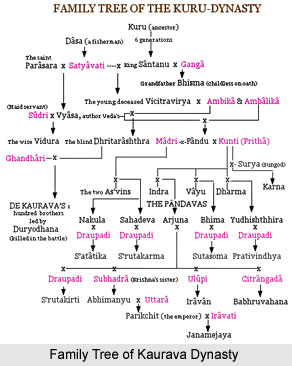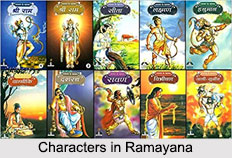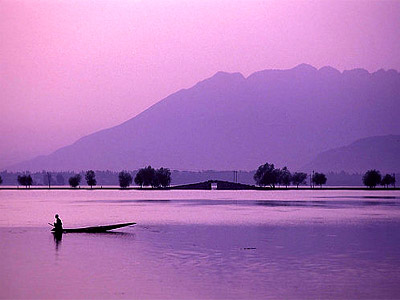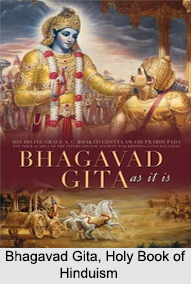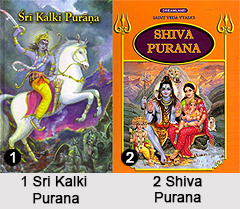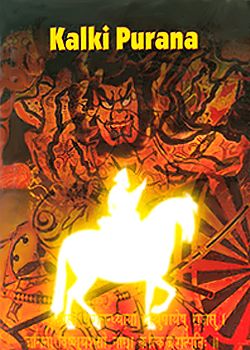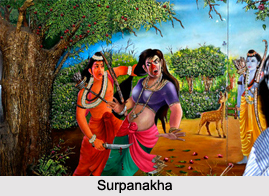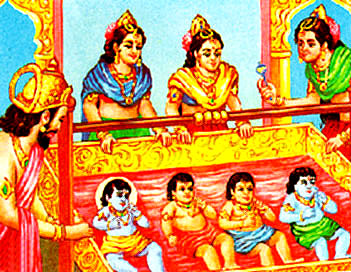 Bala Kanda is the episode which starts the great epic Ramayana. In this Kanda or episode, there are descriptions about how Dasaratha, the king of Ayodhya, got four sons from his three wives. The detailed description of the four sons of the king and their childhood and education in ashram and the marriage of Lord Rama with Sita also form a part of the Bala Kanda. The kingdom of Ayodhya was elaborately described as one of the most beautiful cities at that time with the great Suryavansi King Dasaratha as its ruler. The episode also narrates the tale regarding the horse sacrifice done by Dasaratha. The Bala Kanda gives an account of the arrival of one of the great sages by the name of Vishwamitra in the kingdom of Ayodhya. The King of Ayodhya, Dasharatha the sage gladly, and promised to give anything that he desired; but when he came to know that his dear son Rama was required for so terrible and dangerous a service, he was cast down, and it seemed as though the light of his life went out. However, the king sends his sons Rama and Lakshmana with the sage to protect the sages so that they can perform their sacrificial rites smoothly and which they did to the best. This episode ends with the marriage of Rama with Sita, the daughter of King Janaka.
Bala Kanda is the episode which starts the great epic Ramayana. In this Kanda or episode, there are descriptions about how Dasaratha, the king of Ayodhya, got four sons from his three wives. The detailed description of the four sons of the king and their childhood and education in ashram and the marriage of Lord Rama with Sita also form a part of the Bala Kanda. The kingdom of Ayodhya was elaborately described as one of the most beautiful cities at that time with the great Suryavansi King Dasaratha as its ruler. The episode also narrates the tale regarding the horse sacrifice done by Dasaratha. The Bala Kanda gives an account of the arrival of one of the great sages by the name of Vishwamitra in the kingdom of Ayodhya. The King of Ayodhya, Dasharatha the sage gladly, and promised to give anything that he desired; but when he came to know that his dear son Rama was required for so terrible and dangerous a service, he was cast down, and it seemed as though the light of his life went out. However, the king sends his sons Rama and Lakshmana with the sage to protect the sages so that they can perform their sacrificial rites smoothly and which they did to the best. This episode ends with the marriage of Rama with Sita, the daughter of King Janaka.
Horse Sacrifice by Dasaratha
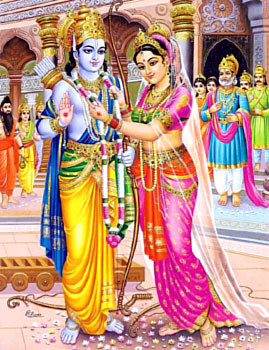 There was a beautiful city called Ayodhya which was unconquerable in the country of Koshala. All men were righteous and happy, well read and contented, truthful, well provided with goods, self-restrained and charitable and full of faith there. Dasaratha was its king, a veritable Manu amongst men, a moon amongst the stars. He had many wise counsellors like Kashyapa and Markandeya, and he had also two saintly priests called Vashishtha and Vamadeva who are greatly attached to his family. To another great sage, Rishyasringa, he gave his daughter Santa. Dasaratha`s ministers were men who could keep their counsel and judge of things finely; they were well-acquainted in the arts of policy and ever fair-spoken. There was only one desire of Dasaratha which was not fulfilled; he had no son to carry on his line. Due to this, after many vain austerities, he made up his mind, at last on the greatest of all offerings - a horse sacrifice; and calling the family priests and other Brahmans, he gave all necessary orders for this undertaking. Then, returning to the inner rooms of the palace, he told his three wives what had been set afoot, whereat their faces shone with joy, like lotus-flowers in early spring. In due course, four sons were born of them, sharing the self of Lord Vishnu - from Kaushalya, Rama; from Kaikeyi, Bharata; and from Sumitra, Lakshmana and Shatrughna; and these names were given to them by Vashishtha.
There was a beautiful city called Ayodhya which was unconquerable in the country of Koshala. All men were righteous and happy, well read and contented, truthful, well provided with goods, self-restrained and charitable and full of faith there. Dasaratha was its king, a veritable Manu amongst men, a moon amongst the stars. He had many wise counsellors like Kashyapa and Markandeya, and he had also two saintly priests called Vashishtha and Vamadeva who are greatly attached to his family. To another great sage, Rishyasringa, he gave his daughter Santa. Dasaratha`s ministers were men who could keep their counsel and judge of things finely; they were well-acquainted in the arts of policy and ever fair-spoken. There was only one desire of Dasaratha which was not fulfilled; he had no son to carry on his line. Due to this, after many vain austerities, he made up his mind, at last on the greatest of all offerings - a horse sacrifice; and calling the family priests and other Brahmans, he gave all necessary orders for this undertaking. Then, returning to the inner rooms of the palace, he told his three wives what had been set afoot, whereat their faces shone with joy, like lotus-flowers in early spring. In due course, four sons were born of them, sharing the self of Lord Vishnu - from Kaushalya, Rama; from Kaikeyi, Bharata; and from Sumitra, Lakshmana and Shatrughna; and these names were given to them by Vashishtha.
The childhood days of the four brothers also forms a part of the Bala Kanda and their lessons in the ashram. The endeavours of Rama and Lakshmana in protecting the sacrificial rites of the sages from the Rakshasas or demons were notable in this episode. Rama especially became the idol of the people and the favourite of his father. Learned in the Vedas, he was no less an expert in the science of elephants and horses and in riding cars, and a very mirror of courtesy. Lakshmana devoted himself to Rama`s service, so that the two were always together. Like a faithful shadow Lakshmana followed Rama, sharing with him everything that was his own, and guarding him when he went abroad to exercise or hunt. In the same way Shatrughna attached himself to Bharata. So it was till Rama reached the age of sixteen.
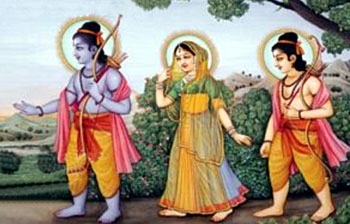 After helping the great sage Vishwamitra in carrying out his sacrificial rites smoothly, Rama asked Vishwamitra what other work he required of him. Vishwamitra informed him of the Swayamvara of Sita in Mithila and asked both Rama and Lakshmana to go with him to Mithila, to which they obeyed politely. The marriage of Rama to Sita takes places after Rama broke the bow of Lord Shiva in Mithila. The other three daughters of the King Janaka were married to Lakshmana, Bharata and Shatrughna.
After helping the great sage Vishwamitra in carrying out his sacrificial rites smoothly, Rama asked Vishwamitra what other work he required of him. Vishwamitra informed him of the Swayamvara of Sita in Mithila and asked both Rama and Lakshmana to go with him to Mithila, to which they obeyed politely. The marriage of Rama to Sita takes places after Rama broke the bow of Lord Shiva in Mithila. The other three daughters of the King Janaka were married to Lakshmana, Bharata and Shatrughna.
Now, of those four sons, Rama was dearest to his father and to all men of Ayodhya. In every virtue he was excelled; for he was of serene temper under all circumstances of fortune or misfortune, never vainly angered; he remembered even a single kindness, but forgot a hundred injuries; he was learned in the Vedas and in all arts and sciences of peace and war, such as hospitality, and policy, and logic, and poetry, and training horses and elephants, and archery; he honoured those of ripe age; he regarded not his own advantage; he despised none, but was solicitous for the welfare of every one; ministering to his father and his mothers, and devoted to his brothers, especially to Lakshmana. But Bharata and Shatrughna stayed with their uncle Ashwapati in another city. Thus, ends the Bala Kanda or the first major episode of the great epic Ramayana written by sage Valmiki.













